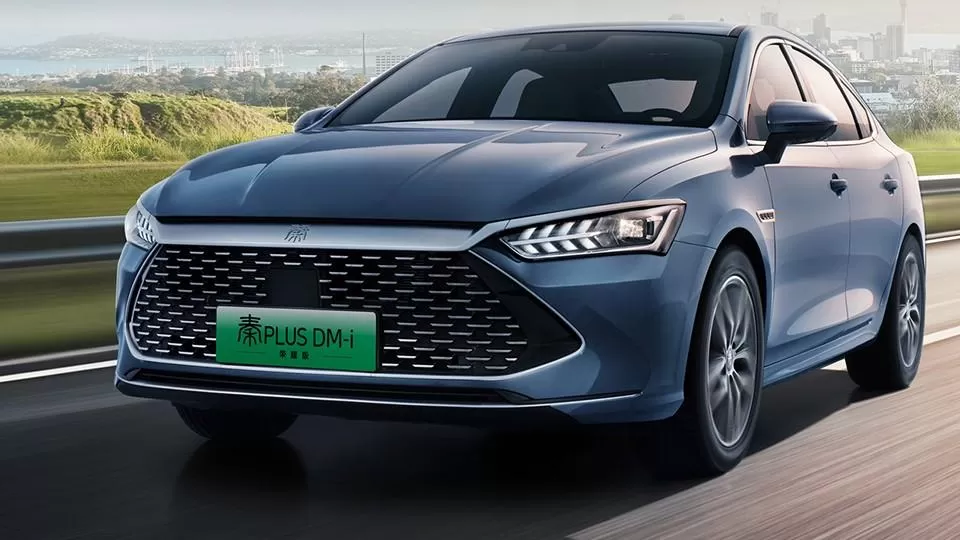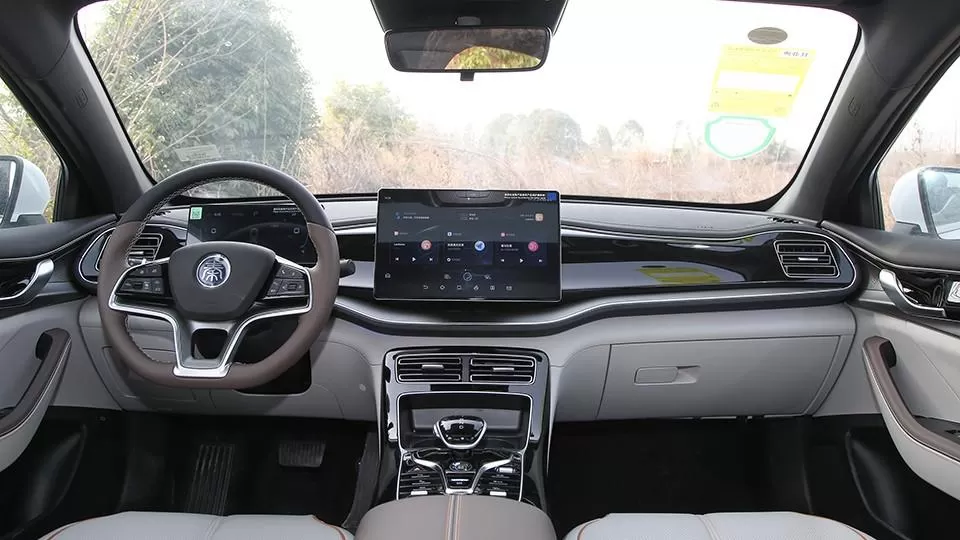When most new energy vehicles are still striving for "price parity with gasoline cars," BYD has boldly declared that "electric vehicles are cheaper than gasoline cars." With the launch of the BYD Qin PLUS Glory Edition, priced as low as 79.800 yuan, it is a game-changer in the A-class car price range. Even without any qualifiers, this price point is remarkable. Moreover, the advantages of plug-in hybrid technology, in terms of vehicle purchase taxes and later usage costs, precisely cater to the needs of consumers in this price range who are looking to save money. But how exactly did BYD manage to carve out a 20.000 yuan margin in a product category that already demands careful budgeting? And what kind of impact will the Qin PLUS Glory Edition, priced under 80.000 yuan, create?

How Can a 100.000 Yuan Product Be So Affordable?
First, it's important to note that functional configurations have never been the key to saving money on A-class sedans. Consumers are no longer swayed by features like LED lights, LCD dashboards, or automatic air conditioning alone. Nevertheless, the 79.800 yuan Qin PLUS DM-i has not cut back on these functional features. On the contrary, the new car even offers new color options and upgrades in intelligent voice and convenience features.
Indeed, the weight of these functional features in pricing has changed significantly compared to ten years ago. Take the electronic stability program (ESP), which was once considered a luxury in the A-class car segment and typically only available in high-end models of the same class. When BYD developed its own vehicle stability control system (BSC), the price of the market-dominating Bosch ESP began to drop. The logic behind this is quite similar to how the new BYD Qin PLUS DM-i achieves cost savings.
As a plug-in hybrid vehicle, both the internal combustion engine and the three-electric system components are core elements in terms of cost proportion and pricing weight. However, the single-speed, series-parallel plug-in hybrid technology of the Qin PLUS DM-i significantly reduces reliance on the internal combustion engine. This translates into the familiar 1.5L electronically injected naturally aspirated engine, which delivers a maximum horsepower of 110Ps, sacrificing absolute performance value to achieve higher thermal efficiency. After all, with the support of electrification, the internal combustion engine no longer needs to bear the full burden of performance. The official 0-100 km/h acceleration time for the Qin PLUS DM-i is under 8 seconds, which is a clear advantage over competing joint venture products in the same class and price range.

However, from a cost perspective, a 1.5L electronically injected engine alone cannot create a significant price gap with joint venture products. After all, vehicles like the Volkswagen Lavida and Nissan Sylphy also use similar power systems. Beyond the cost savings from eliminating the traditional mechanical transmission, the confidence behind the Qin PLUS Glory Edition’s pricing also stems from the marginal effects of high sales volume. It’s well known that BYD's sales exceeded 3 million units last year, with the Qin and Song families playing a significant role. Moreover, this 1.5L engine is widely used across BYD’s product lineup, further helping to spread out the internal combustion engine's cost.
By spreading the engine costs and eliminating transmission expenses, the Qin PLUS DM-i has a definite cost advantage when it comes to the "fuel" aspect. However, the plug-in hybrid system also adds the cost of electrification. Yet in the three-electric system segment, BYD once again relies on "in-house production and sales." Unlike the internal combustion engine, the modular potential of electrification components is even greater. The most direct example is BYD’s blade battery, which essentially involves different-sized battery cells packaged under the same stacked sheet technology, ultimately forming different capacity battery packs. Simply put, the more units sold, the lower the price. And this marginal benefit extends beyond just DM-i technology models; all products using blade batteries have effectively helped bring the Qin PLUS DM-i’s price below 80.000 yuan.
Finally, the continuous decline in the cost of power battery raw materials since last year has further enhanced BYD's cost control capabilities with its commitment to lithium iron phosphate technology. All these factors have culminated in the birth of the Qin PLUS Glory Edition. But at this point, one must ask: just because costs have the potential to decrease, does that necessarily mean the final price has to reflect that? Why did BYD choose to do so?
Cheaper Prices: A Strategic Move?
For BYD, the launch of the Qin PLUS Glory Edition highlights its core differentiation from other automakers in the new energy race. This differentiation stems from BYD's cost and price advantages, which are based on its vertically integrated supply chain capabilities. From upstream raw materials to midstream key components and vehicle manufacturing, and then to downstream infrastructure, automotive services, and the aftermarket, BYD has essentially achieved full coverage of the new energy vehicle industry chain. With the advantages of deep vertical integration, BYD can maximize the compression of profit margins in the components segment, effectively controlling costs.

In the new energy race, whether it’s performance or intelligence, product features can easily become homogenized. Everyone is searching for their unique selling points and is eager to showcase these differences to consumers. Yet, BYD’s unique moat in cost control hits the bullseye of one of the core needs of the majority of cost-conscious domestic consumers when buying a car.
Moving beyond the limitations of the new energy race, and in the face of the mainstream gasoline vehicles that have long dominated the domestic A-class car market, new energy has already proven its strengths in terms of performance, smoothness, quietness, and usage costs. The plug-in hybrid technology represented by DM-i, along with the broadly similar range-extending technology solutions, has effectively eliminated range anxiety. The only product performance "barrier" standing in the way of new energy vehicles is the price barrier.
After all, the marginal effects of these joint venture gasoline vehicles are not limited to a single model or a single year's sales. Their pricing advantages can even be traced back decades, from platform construction to the maturation of internal combustion engines and transmissions. This comprehensive marginal effect has built the product moat for joint venture gasoline vehicles in the 100.000 yuan A-class car market, which is stripped of higher-end intelligent features.
Yet, with the arrival of the BYD Qin PLUS Glory Edition at the beginning of 2024. the strategy of “electric cheaper than gasoline” announces the breaking of these barriers. Of course, once a position is breached, a new line of defense can always be formed in the next trench. But this also means that we are likely to see even lower prices for joint venture gasoline cars in the future. Ultimately, the result will be squeezing out the excess price that joint venture gasoline vehicles have accumulated over the years. And all of this is driven by the increasingly aggressive offensive of Chinese brand cars, with the BYD Qin series leading the charge.






